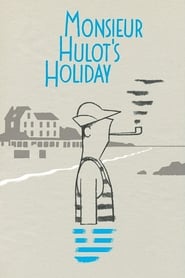Adding sound often served as a way of “retouching” [Tati's] images by directing our eyes, sometimes by complicating or even undermining the visual evidence. French film analyst Michel Chion has suggestively pointed out, for example, that if we listen to one of the naturalistic beach sequences in Monsieur Hulot’s Holiday without the image to “mislead” us, the apparent boredom, discomfort, and inertia of adult vacationers trying to figure out what to do become the sound of lively children enjoying themselves.[…]
One of the most telling phrases [used by André Bazin], offering an important clue to what makes Tati so distinctive, is “sound decor.” We usually think of decor as something designed and built rather than as a “found” element, but in Tati it’s usually both. The fact that Monsieur Hulot’s Holiday was mainly shot at an actual seaside resort shouldn’t mislead one into thinking that it wasn’t partially designed and built as well. The facades of both the Hôtel de la Plage and the house where the character Martine stays are constructed sets,
and the paradoxical reason for this was to make the film more “realistic.” The Hôtel de la Plage was a real hotel, and Tati insisted on shooting much of his film there while it went about its normal operations. But in order to do this without interfering too much with those operations, a fake front where he could shoot many scenes also had to be built. In short, even the manufactured decor in Tati’s world is meant to be observed and discovered rather than simply noticed. And the subtle mix of real and artificial elements applies equally to the soundtrack, as Bazin was among the first to observe.
— Jonathan Rosenbaum (Criterion)
Synopsis: Monsieur Hulot, Jacques Tati’s endearing clown, takes a holiday at a seaside resort, where his presence provokes one catastrophe after another. Tati’s masterpiece of gentle slapstick is a series of effortlessly well-choreographed sight gags involving dogs, boats, and firecrackers; it was the first entry in the Hulot series and the film that launched its maker to international stardom.

